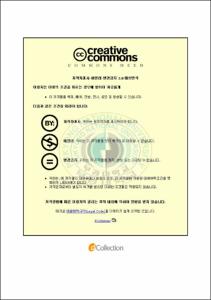한·일 중학교 국어과 듣기·말하기 영역 교육과정 및 교과서 비교 연구
- Alternative Title
- THE COMPARATIVE STUDY ON LISTENING AND SPEAKING DOMAINSIN MIDDLE SCHOOL CURRICULUM AND LANGUAGE TEXTBOOkS OF KOREA AND JAPAN
- Abstract
- This age is called as the era of internationalization and globalization. That's because the regional and nationalistic conservative trend has shifted to that of considering global and open national interests. This trend has also effects on education, consequently resulting in various comparative studies on other countries' educational system, curriculum, and the contents of texts to improve those of their own.
Japan is one of the countries which have the closest relationships with our country, Korea, historically and geographically and use one language. And it is also within the same Chinese-character culture. In this respect it can be meaningful to conduct researches on the curriculum of both countries' language education and the comparative study on texts.
Effective communication is not only necessary for good social life but also in itself actions of using a language. Therefore to improve students' ability in using a language effectively can be one of the most important objectives the language education aims at. Listening and speaking among the four skill domains, listening speaking, reading and writing, have to be considered of much importance in the light of the fact that they are based on sounds of a language and mainly used as ways of communication in real life. In addition, as people in modern society tend to get more information through a variety of mass media, listening and speaking grow more important. As result we need to educate students more systematically in listening and speaking. Accordingly this study is designed to search for improvements in teaching students how to listen and speak in our language class by comparing listening and speaking domains which are dealt with in the secondary education curriculum and the structure of texts of both Korea and Japan. To complement the study, general comparative analysis on the seventh educational curriculum, diagnosis on what the real problems are in the real classroom through a survey, and some suggestions for improvements are included.
This study can be summed up as follows:
1. The objective of language education in Korea is too specific. It needs to be changed into more comprehensive objective .
2. Speaking and listening education in Korea is not practiced inefficiently because they divided the two domains from each other even though the domains are closely related. It is needed to combine the two domains. Also it is needed for them to be combined with reading and speaking.
3. Compared to the Japanese texts, the allotment of units and the four skill domains in Korean ones lacks the hierarchy and system.
4. Korean texts have too much contents, and as a consequence the teaching contents which are supposed to have balance in their nature, principle, and contents , are more theory and principle-oriented and fall a little short of practicality-oriented features. So it is recommendable to reduce the amount of text contents so that more teaching time can be poured into practical activities.
5. The contents of curriculum and objectives of units are not naturally related to the class activities.
6. Training courses to help teachers to get expertise should be developed and studies on how to teach listening and speaking effectively and systematically should be made. For this purpose, the present training courses for teachers should strengthened. Also it is necessary to make some systems to practice performance assessments and include the results in the students grades.
- Issued Date
- 2008
- Awarded Date
- 2008. 8
- Type
- Dissertation
- Keyword
- 한일 중학교 국어과 듣기말하기영역 생활국어교과서
- Publisher
- 부경대학교 교육대학원
- Alternative Author(s)
- Kim, Woo-Tae Gon
- Affiliation
- 부경대학교 교육대학원
- Department
- 교육대학원 국어교육전공
- Table Of Contents
- Ⅰ. 서론 = 1
1-1. 연구의 필요성과 목적 = 1
1-2. 선행 연구검토 와 문제제기 = 3
1-3. 연구방법과 범위 및 연구의 제한성 = 7
Ⅱ. 한국과 일본의 제 7차 중학교 국어과 교육 과정 비교 = 10
2-1. 한국과 일본의 제 7차 중학교 국어과 교육 과정 = 10
2-2. 중학교 국어과 교육과정의 듣기·말하기 영역 = 30
2-3. 교육과정의 관련 요소 비교를 통한 분석과 제언 = 48
Ⅲ. 한국과 일본의 국어과 교과서의 듣기·말하기 영역 = 52
3-1. 단원별 영역 배열과 듣기·말하기 영역의 단원 구성 체제 = 52
3-2. 듣기·말하기 영역의 단원 별 내용 및 활동 내용 = 73
3-3. 듣기·말하기 영역 단원 및 활동 내용 분석을 통한 시사점과 제언 = 84
Ⅳ. 한국과 일본의 듣기·말하기 영역의 현장 지도의 실제와 개선점 = 88
4-1. 듣기·말하기 영역현장 지도의 실제 = 88
4-2. 듣기·말하기 영역지도의 문제점과 개선점 = 103
Ⅴ. 결론 및 제언 = 106
《참고문헌》 = 112
부록1 한국의 생활국어 교과서와 일본의 국어교과서 목차(중학교) = 117
부록2 한국과 일본의 교육과정 내용과 교과서 내용의 대응 = 125
부록3 한국과 일본의 교육과정 내용(한국: 내용체계, 일본 : 영역배열) = 131
- Degree
- Master
- Files in This Item:
-
-
Download
 한·일 중학교 국어과 듣기·말하기 영역 교육과정 및 교과서 비교 연구.pdf
기타 데이터 / 9.64 MB / Adobe PDF
한·일 중학교 국어과 듣기·말하기 영역 교육과정 및 교과서 비교 연구.pdf
기타 데이터 / 9.64 MB / Adobe PDF
-
Items in Repository are protected by copyright, with all rights reserved, unless otherwise indicated.